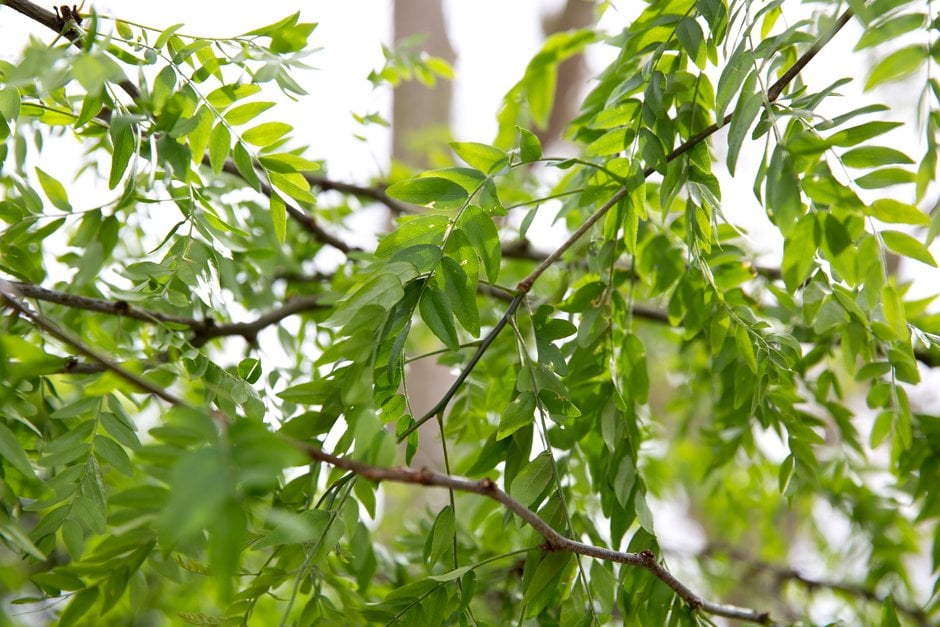Gleditsia triacanthos f. inermis
thornless honey locust
A large, spreading, deciduous tree to 20m tall with a thornless trunk and divided leaves comprising paired, oblong, glossy leaflets that turn yellow in autumn. Insignificant greenish flowers are followed by flat, brown seed pods often twisted into a sickle shape

Buy this plant
Size
Ultimate height
Higher than 12 metresTime to ultimate height
20–50 yearsUltimate spread
Wider than 8 metresGrowing conditions
Moisture
Moist but well–drained, Well–drainedpH
Acid, Alkaline, NeutralColour & scent
| Stem | Flower | Foliage | Fruit | |
| Spring | Bronze Red | |||
|---|---|---|---|---|
| Summer | Green | Green Brown | ||
| Autumn | Yellow | Brown | ||
| Winter |
Position
- Full sun
Aspect
West–facing or South–facing or North–facing or East–facing
Exposure
Exposed or Sheltered Hardiness
H6Botanical details
- Family
- Fabaceae
- Native to GB / Ireland
- No
- Foliage
- Deciduous
- Habit
- Bushy
- Genus
Gleditsia are deciduous trees with elegant, pinnate or bipinnate foliage, often on spiny branches, inconspicuous flowers followed by large flattened seed-pods
- Name status
Correct
- Plant range
- C & E USA
How to grow
Cultivation
Grow as a specimen tree in any well-drained soil in full sun
Propagation
Propagate by seed or grafting
Suggested planting locations and garden types
- Low Maintenance
Pruning
Pests
May be susceptible to gall midge
Diseases
May be susceptible to honey fungus
Get involved
The Royal Horticultural Society is the UK’s leading gardening charity. We aim to enrich everyone’s life through plants, and make the UK a greener and more beautiful place.